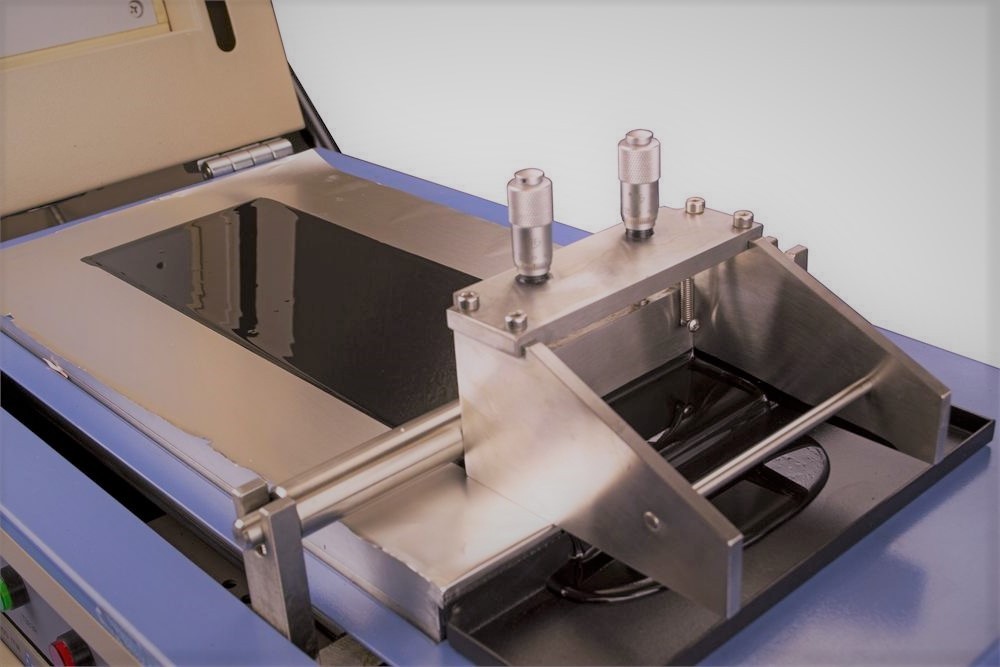
Author: Ali Kosari Mehr
Tape casting or doctor blade
Being a thick-film deposition method, doctor blade (tape casting) can be utilized for the deposition of uniform coatings by pressing a blade into inks as there is a set separation between the substrate and the blade. With the aim of depositing lengthy films, the role of the substrate and the blade can be reversed such that the substrate moves while the blade is kept fixed in a position. The method’s thickness capability, ink viscosity range, and powder loading are 10μm–1mm, 100-130 mPa-s, and 10–40 vol%, respectively. In this process, ink’s viscosity should satisfy two conditions:
- It should be high enough so that the ink could not excessively flow out of the bottom of its tank.
- It should be low enough so that the ink could continuously flow as the substrate passes the blade.
Ultimately, ink’s density (ρi), green-body film’s density (ρgb), ink’s viscosity (ηi), substrate’s relative velocity (νs), set separation between the substrate and the blade (ldb), and the pressure applied by ink (Δp) are the factors governing the final thickness of the films:
h∝(ρi/ρgb)[1+(h02Δp)/(6ηiνsldb)]
References:
- Dorey R (2012) Thick-film deposition techniques: How to make thick films – the processing techniques used to create films. Ceram Thick Film MEMS Microdevices 63–83. Webpage
-
 20 Aug, 2022What is Auger electron spectroscopy?
20 Aug, 2022What is Auger electron spectroscopy? -
 13 Jul, 2022Classification of vacuum pumps
13 Jul, 2022Classification of vacuum pumps
